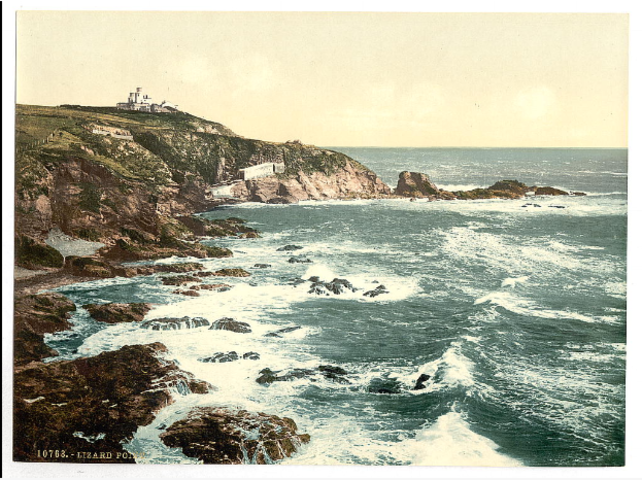Frank’s Commentary:
I got a letter from my parents today, and they sent this wonderful picture with it. They thought I could use a reminder of home, and since I had mentioned the Lorimer Sisters and their business in my last letter, they thought a picture would be nice. I have to agree, and I think I shall have it framed. It is rather nice to have something to remind me of home. It has been far too long since I last visited. I should make plans to visit soon. I wonder if Lucy or her sisters would like to visit Cornwall and meet my parents? I should ask next time I go over. They deserve a break, with how hard they’ve been working. Even if they can’t all afford a break, perhaps they could take some equipment with them and do some photography while they are there. The countryside is quite nice, and it would be a pleasant change of scenery for all those involved, I would say. There is clearly a market for photographs in Cornwall, judging by this photo. And the Lorimers do such wonderful work, so I have no doubt they would be able to beat any competition they might have. The more I think about it, the better this idea sounds. It will be nice to see Cornwall again, and I am quite excited to show the Lorimers around. I do hope they will actually be able to go.
Editorial Commentary:
The region of Cornwall is a small and somewhat lesser known region of England. It is considered culturally and ethnically Celtic, and even has its own language (Hannigan 133). Cornwall has historically been considered separate from England because of this, and it wasn’t until the 19th century and the Victorian Era that this view began to shift (Hannigan 134). Before the 19th century, Cornwall was viewed as a barbaric place, and certainly not anywhere a self-respecting english person would choose to visit (Hannigan 134). In fact, the photo Mr. Jermyn was sent would have been dismissed as terribly ugly before the Victorian Era, as Cornwall was generally thought of as being barren and uninteresting to look at (Hannigan 135). Interestingly, it was not uncommon to compare the people of Cornwall to the Jewish, although the comparison was never meant in a positive way (Hannigan 137). As the Victorian Era progressed, such comparisons became less and less common, and Cornwall was viewed in a more favourable light, although it was still considered to be essentially foregin to England (Hannigan 140-141). By the time Mr. Jermyn was writing this journal entry, the English perception of Cornwall was quite far along in its shift into a more positive light, being considered less desolate and uninteresting and more rugged and unexplored (Hannigan 142). Such a shift is ultimately unsurprising for the Victorian Era, which was characterized by great change in how society perceived many different peoples and their place in England.
Sources:
Hannigan, Tim. “‘A Hideous and a Wicked Country’: Cornwall under the Travel Writer’s Gaze, and Receiving Travelers’ Texts as a ‘Travelee-Reader.’” Terrae Incognitae, vol. 51, no. 2, Aug. 2019, pp. 131–152. EBSCOhost, doi:10.1080/00822884.2019.1633032. Accessed 12 Apr. 2021.
Lizard Point, Cornwall, England. 1890, www.loc.gov/resource/ppmsc.08225/. Accessed 12 Apr. 2021.


